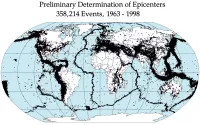Guam is an organized, unincorporated territory of the United States located in the Micronesia subregion of the western Pacific Ocean. Hagåtña is its capital, while Dededo is its most populous village. It is the westernmost U.S. territory and the largest and southernmost of the Mariana Islands. Guam is also the largest island in Micronesia. The island's population in 2022 was about 168,801, with Chamorros being the largest ethnic group. Guam spans 210 square miles and has a population density of 775 per square mile.
1900: Typhoon of 1900
In 1900, Guam was struck by a major typhoon causing significant damage.
1901: Chamorro Leaders Petition for U.S. Citizenship
In 1901, Chamorro leaders began petitioning for U.S. citizenship and greater political autonomy, but these efforts were largely unsuccessful at the time.
December 10, 1914: SMS Cormoran Seeks Port at Apra Harbor
On December 10, 1914, the SMS Cormoran, a German armed merchant raider, sought port at Apra Harbor due to a shortage of coal.
April 7, 1917: US Declares War on Germany
On April 7, 1917, Guam received word that the U.S. Congress had declared war on Germany. The Naval Governor of Guam ordered the surrender of the SMS Cormoran and its crew, who were then taken as prisoners of war.
1917: Internment of SMS Cormoran Crew
In 1917, the crew of the SMS Cormoran were interned after the United States refused to provide sufficient provisions for the ship to reach a German port.
1925: Discovery of the Rota Latte Stone Quarry
In 1925, the Rota Latte Stone Quarry, a possible source for latte stones, was discovered on Rota.
1936: Delegates Petition for Chamorro Citizenship
In 1936, delegates Baltazar J. Bordallo and Francisco B. Leon Guerrero traveled to Washington, D.C., to petition for Chamorro citizenship, though substantial political reforms were not achieved.
December 8, 1941: Japanese Capture of Guam
On December 8, 1941, shortly after the attack on Pearl Harbor, Guam was captured by the Japanese forces.
July 21, 1944: American Recapture of Guam
On July 21, 1944, American forces recaptured Guam from the Japanese, an event commemorated as Liberation Day.
1944: United States Recaptures Guam
In 1944, from July 21 to August 10, the United States recaptured Guam in the Battle of Guam. This event is commemorated as Liberation Day on July 21.
1950: Guam Organic Act
In 1950, the Guam Organic Act established Guam as an unincorporated organized territory of the United States, providing for civilian government and granting U.S. citizenship, though without full rights.
October 15, 1953: Most Rainfall in a Single Day
On October 15, 1953, Guam experienced the most rainfall in a single day, with 15.48 inches or 393.2 millimeters.
1956: First Jury Trial in Guam
In 1956, the first jury trial was held in Guam, following mobilization due to the initial exclusion of the right to trial by jury in the Organic Act.
1962: Typhoon Karen
In 1962, Guam was struck by Typhoon Karen, causing major damage.
1963: Removal of Guam's Security Clearance
In 1963, President John F. Kennedy removed Guam's security clearance, which allowed for the development of a tourism industry.
1968: Guam Elective Governor Act
In 1968, the Guam Elective Governor Act provided for the popular election of the Governor of Guam, previously a federally appointed position.
1969: Referendum on Unification with Northern Mariana Islands
In 1969, a referendum was held in Guam regarding unification with the Northern Mariana Islands, but it was rejected.
1970: Hawksbill Sea Turtle Listed as Endangered
Since 1970, the hawksbill sea turtle (Eretmochelys imbricata) has been on the endangered list.
April 18, 1971: Highest Recorded Temperature
On April 18, 1971, the highest temperature ever recorded in Guam was 96 °F (35.6 °C).
February 8, 1973: Lowest Recorded Temperature
On February 8, 1973, the lowest recorded temperature in Guam was 65 °F (18.3 °C).
1975: Guam Hosted the Pacific Games
Guam hosted the Pacific Games in 1975.
1975: Founding of Guam National Football Team
The Guam national football team was founded in 1975.
1976: Wettest Calendar Year
1976 was the wettest calendar year on record, with 131.70 inches (3,345.2 mm) of rainfall.
1976: Aftermath of Typhoon Pamela
Following Typhoon Pamela in 1976, wooden structures in Guam began to be largely replaced by concrete structures.
1976: Typhoon Pamela
In 1976, Guam was struck by Typhoon Pamela, causing major damage.
August 1978: Green Sea Turtle Listed as Threatened
In August 1978, the green sea turtle (Chelonia mydas) was listed as threatened under the Endangered Species Act, affecting legal harvesting practices on Guam.
1981: Average Annual Rainfall
Between 1981 and 2010, Guam's average annual rainfall was 98 inches or 2,490 millimeters.
1983: Guam Joins the Pacific Community
In 1983, Guam became a member of the Pacific Community.
April 1, 1990: Highest Recorded Temperature
On April 1, 1990, the highest temperature ever recorded in Guam was 96 °F (35.6 °C).
August 8, 1993: Severe Earthquake
On August 8, 1993, a powerful 8.2 magnitude earthquake struck Guam, though it was less devastating than previous seismic events.
August 1997: Wettest Month on Record at Guam Airport
August 1997 was recorded as the wettest month at Guam Airport, with 38.49 inches (977.6 mm) of rainfall.
1997: Typhoon Paka
In 1997, Guam was struck by Typhoon Paka, causing major damage.
1997: Asian Financial Crisis and Typhoon Paka
In 1997, the Asian financial crisis, particularly in Japan, severely affected Guam's tourism industry. The island was also hit by super typhoon Paka.
1998: Driest Year on Record
In 1998 Guam experienced its driest year on record with 57.88 inches (1,470.2 mm) of rainfall.
1999: Guam Hosted the Pacific Games
Guam hosted the Pacific Games in 1999.
2002: Typhoon Pongsona
In 2002, Guam was struck by Typhoon Pongsona, causing major damage.
2004: Congressional Testimony on Chamorro Deaths
In 2004, testimony before a U.S. Congressional committee indicated that approximately 1,100 Chamorros were killed during the Japanese occupation of Guam during World War II.
2005: First Match of Guam National Rugby Team
The Guam national rugby union team played its first match in 2005.
2007: Guam's Performance at the 2007 Pacific Games
At the 2007 Pacific Games, Guam finished 7th out of 22 countries in the medal count.
2009: First Victory Over FIFA-Registered Side
In 2009, the Guam national football team experienced their first victory over a FIFA-registered side.
2010: Religious Demography
According to the Pew Research Center in 2010, the religious demography of Guam showed a significant Christian population.
2010: Average Annual Rainfall
Between 1981 and 2010, Guam's average annual rainfall was 98 inches or 2,490 millimeters.
2011: Guam's Performance at the 2011 Pacific Games
At the 2011 Pacific Games, Guam finished 14th in the medal count.
February 2015: Driest Month on Record at Guam Airport
February 2015 was recorded as the driest month at Guam Airport, with only 0.15 inches (3.8 mm) of rainfall.
2015: Guam Hosts Qualifying Games
In 2015, Guam hosted qualifying games for the first time.
2018: First FIFA World Cup-Qualifying Win
In 2018, the Guam national football team gained their first FIFA World Cup-qualifying win.
2019: Guam Men's Basketball Team Champions
As of 2019, the Guam men's national basketball team is the reigning champion of the Pacific Games Basketball Tournament.
2020: Catholic Population
In 2020, the Vatican claimed that 87.72% of the population of Guam was Catholic, served by 54 priests and 64 nuns across 27 parishes.
2020: 2020 United States Census Data
In the 2020 United States census, the largest ethnic group in Guam were the native Chamorros, accounting for 32.8% of the population, while Asians accounted for 35.5%.
February 1, 2021: Record Low Temperature
On February 1, 2021, a record low temperature of 69 °F (21 °C) was set in Guam.
2022: Guam Population in 2022
In 2022, the population of Guam was reported to be 168,801. Chamorros are the largest ethnic group, but a minority on the multiethnic island.
2023: Typhoon Mawar
In 2023, Guam was struck by Typhoon Mawar, causing major damage.
Mentioned in this timeline

Basketball is a team sport played on a rectangular court...

John F Kennedy JFK was the th U S President...
American Samoa is an unincorporated territory of the United States...
Germany officially the Federal Republic of Germany is a Western...
Japan is an East Asian island country situated in the...

An earthquake is the shaking of the Earth's surface caused...
Trending
Keldon Johnson is an American professional basketball player currently playing for the San Antonio Spurs in the NBA Prior to...

6 months ago Potential NBA Trades: Dillon Brooks, DeMar DeRozan, and the Rockets' Draft Pick

5 months ago Clippers provide update on Kawhi Leonard's condition after injury struggles, future plans.

1 month ago Jason Statham's 'A Working Man' achieves streaming success despite mixed reviews, replacing The Beekeeper.

2 months ago Jamal Murray and Nikola Joki? discussed by David Adelman; Nuggets face Warriors and Suns.

8 months ago Tim Hardaway Jr. aims to continue father's playoff success, reflecting on impressive NBA career.
Popular

Tucker Carlson is an American conservative political commentator known for...

XXXTentacion born Jahseh Dwayne Ricardo Onfroy was a controversial yet...

Candace Owens is an American conservative political commentator and author...

Ben Shapiro is a prominent American conservative political commentator media...

William Franklin Graham III commonly known as Franklin Graham is...

John F Kennedy JFK was the th U S President...